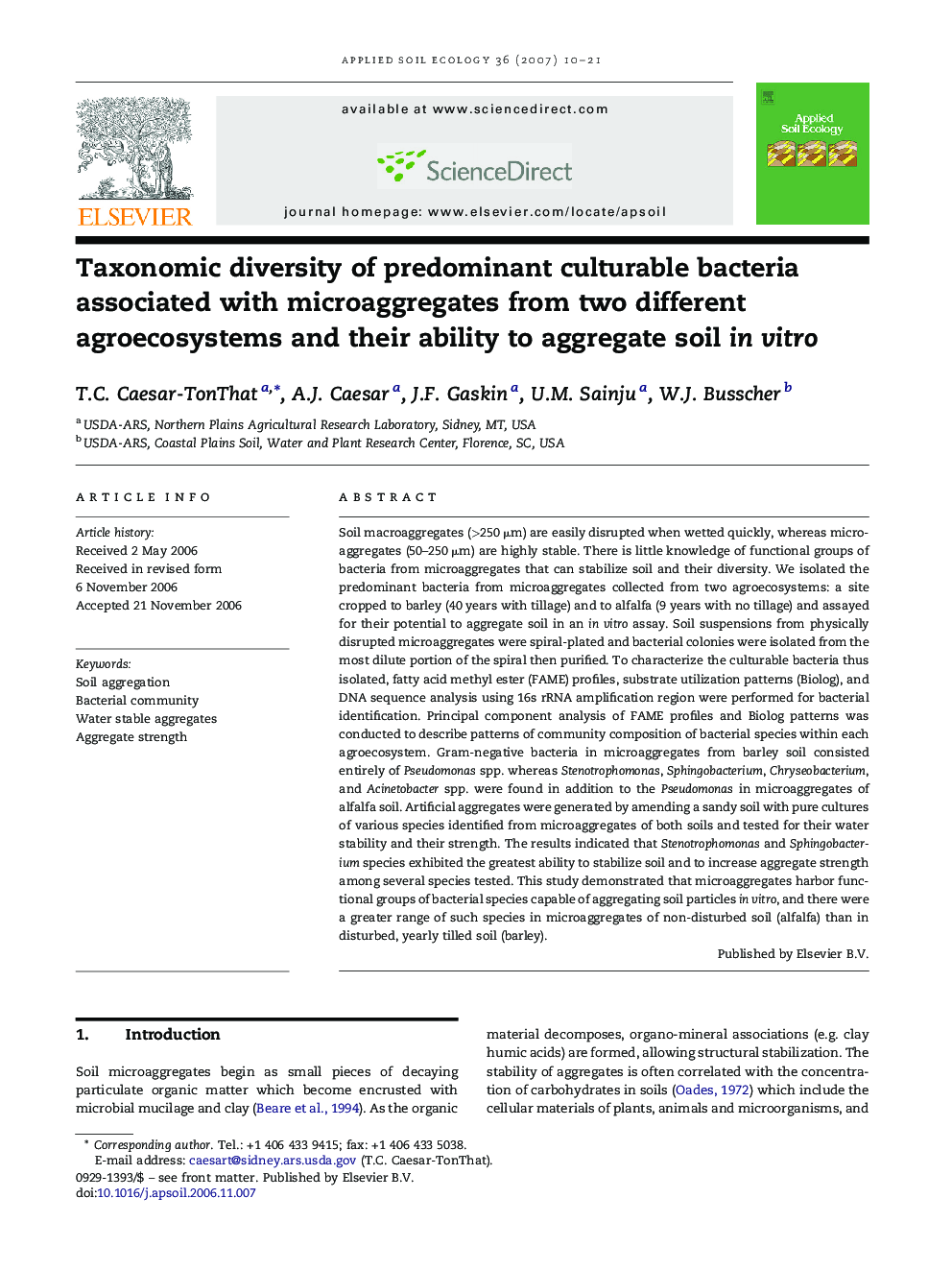| کد مقاله | کد نشریه | سال انتشار | مقاله انگلیسی | نسخه تمام متن |
|---|---|---|---|---|
| 4383504 | 1304270 | 2007 | 12 صفحه PDF | دانلود رایگان |

Soil macroaggregates (>250 μm) are easily disrupted when wetted quickly, whereas microaggregates (50–250 μm) are highly stable. There is little knowledge of functional groups of bacteria from microaggregates that can stabilize soil and their diversity. We isolated the predominant bacteria from microaggregates collected from two agroecosystems: a site cropped to barley (40 years with tillage) and to alfalfa (9 years with no tillage) and assayed for their potential to aggregate soil in an in vitro assay. Soil suspensions from physically disrupted microaggregates were spiral-plated and bacterial colonies were isolated from the most dilute portion of the spiral then purified. To characterize the culturable bacteria thus isolated, fatty acid methyl ester (FAME) profiles, substrate utilization patterns (Biolog), and DNA sequence analysis using 16s rRNA amplification region were performed for bacterial identification. Principal component analysis of FAME profiles and Biolog patterns was conducted to describe patterns of community composition of bacterial species within each agroecosystem. Gram-negative bacteria in microaggregates from barley soil consisted entirely of Pseudomonas spp. whereas Stenotrophomonas, Sphingobacterium, Chryseobacterium, and Acinetobacter spp. were found in addition to the Pseudomonas in microaggregates of alfalfa soil. Artificial aggregates were generated by amending a sandy soil with pure cultures of various species identified from microaggregates of both soils and tested for their water stability and their strength. The results indicated that Stenotrophomonas and Sphingobacterium species exhibited the greatest ability to stabilize soil and to increase aggregate strength among several species tested. This study demonstrated that microaggregates harbor functional groups of bacterial species capable of aggregating soil particles in vitro, and there were a greater range of such species in microaggregates of non-disturbed soil (alfalfa) than in disturbed, yearly tilled soil (barley).
Journal: Applied Soil Ecology - Volume 36, Issue 1, May 2007, Pages 10–21